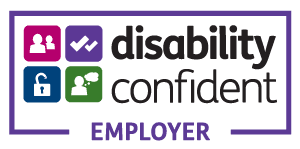Navigating the credentialing process is essential for any healthcare professional aiming to practice in hospitals or healthcare facilities. For primary care physicians (PCPs), this process ensures they meet the medical credentialing standards required to provide high-quality care and access patient insurance benefits. Whether you're a new physician or an experienced professional transitioning to a new healthcare system, understanding the credentialing process is vital for smooth integration into your medical practice.
Credentialing and Its Importance for Primary Care Physicians
Physician credentialing is the formal process of verifying a physician’s qualifications, training, and professional background to ensure they meet specific requirements for providing medical services. This process includes validating a physician’s medical license, professional training, board certifications, and other critical documents. Additionally, credentialing involves insurance verification, allowing physicians to bill and receive reimbursements from insurance providers.
For primary care physicians, credentialing is particularly essential, as they often serve as the first point of contact in a patient’s healthcare journey. Proper credentialing grants you hospital privileges, includes you in healthcare networks, and enables you to treat a diverse patient population. It also facilitates your provider enrollment with health systems, secures your in-network provider status, and ensures you can legally and efficiently practise while receiving reimbursement for your services.
Related: How to obtain a DEA license
Types of Credentialing for Primary Care Physicians
There are several types of credentialing processes a physician may undergo:
- Initial Credentialing: For new physicians entering the workforce or moving to a new healthcare facility.
- Recredentialing: A periodic process that ensures physicians remain qualified and compliant with required standards.
- Locum Tenens Credentialing: This expedited credentialing process is for temporary physicians. Though faster, it still requires verifying qualifications, insurance enrollment, and medical licenses.
Key Steps in the Primary Care Physician Credentialing Process
Gather Necessary Documentation
The first step is gathering the required documents for medical credentialing. This includes your medical degree, residency certificates, board certifications, state license, and DEA registration. You’ll also need to submit malpractice insurance details and a claims history. These documents ensure you meet the credentialing requirements for hospital settings and medical practice.
Primary Source Verification
Primary source verification is critical. This step ensures the accuracy of your credentials. Hospitals, healthcare organizations, and insurance providers verify qualifications directly with the issuing entities, such as medical schools, the American Medical Association (AMA), and state licensing boards, reducing the chances of delays or errors.
Enrollment with Insurance Companies
To be eligible for reimbursement, physicians must complete the insurance credentialing process. This involves enrolling with insurers such as Medicare, Medicaid, and private providers. Insurance credentialing ensures that a physician is recognized by these companies, allowing them to bill for and be reimbursed for the services they provide. Insurance approval timelines can vary, so you must ensure you meet all requirements for each insurance provider.
Obtain Hospital Privileges
Hospital privileges grant physicians the ability to admit and treat patients within a healthcare facility. The credentialing process often involves a separate privileging procedure, where hospitals assess physicians’ qualifications before issuing privileges. This ensures that healthcare providers meet the necessary standards for patient care within that system.

How to Streamline the Credentialing Process
Credentialing can be time-consuming, but primary care physicians can take steps to streamline the process:
- Work with Credentialing Experts: Credentialing departments or specialists can help ensure all documents are submitted on time and correctly.
- Use Digital Platforms: Platforms like CAQH and PECOS automate parts of the process, allowing physicians to manage and submit their credentials to multiple insurers and facilities more efficiently.
- Maintain Proactive Communication: Stay in regular contact with your credentialing department to track the status of your application and address any issues quickly.
What Happens After Credentialing is Complete?
Once credentialing is complete, the physician can begin treating patients, enroll in insurance plans, and access hospital privileges. However, ongoing credentialing is required to ensure continued compliance with healthcare standards and regulations. Physicians must undergo re-credentialing periodically and ensure their provider enrollment stays up to date.
Common Challenges and How to Overcome Them
Credentialing is necessary for high-quality patient care, but it can be challenging. Some common hurdles include:
- Documentation Errors: Incomplete or incorrect documentation can delay the process. Make sure all documents are accurate and up-to-date.
- Verification Delays: The verification process can take time, especially when dealing with multiple insurers or confirming credentials with various medical schools or licensing boards.
- Insurance Roadblocks: Different insurers have varying timelines and requirements for credentialing, which can slow down the process.
Conclusion
Understanding the credentialing process is essential for primary care physicians, whether you're new to the field or transitioning between practices. This process ensures that physicians meet the required standards to provide medical services, work within healthcare facilities, and gain hospital privileges. Credentialing also allows physicians to receive reimbursement from insurance companies, a critical aspect of sustaining their practice.
Credentialing isn’t just about compliance, it’s about ensuring patient safety and maintaining high-quality care. By staying proactive, leveraging digital tools, and understanding the process, primary care physicians can streamline their credentialing experience, avoid delays, and focus on delivering excellent patient care.
Ready for your next career move?
Join Verovian Medical Recruitment Agency today! We specialize in helping primary care physicians secure job placements nationwide. With our expert support in credentialing and access to top healthcare facilities, we’ll ensure your career thrives. Contact us now to explore exciting opportunities across the US!




